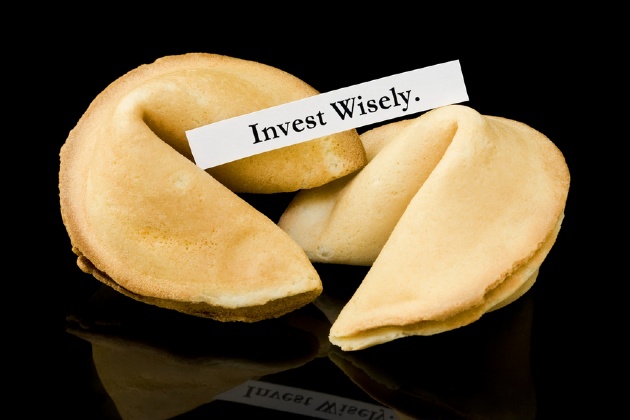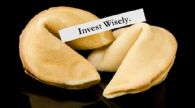Are your personal finances in good shape? If you've succeeded in sticking to your budget even better than you thought you would, you probably have a little left over in savings.
Whether your extra cash is the result of a tax refund, unexpected income or good old-fashioned self-discipline, you should study different avenues to determine the best solution to grow your assets.
We all know that saving is the most important aspect of financial planning, but it's often difficult to know whether to opt for a Registered Retirement Savings Plan (RRSP), a Registered Education Savings Plan (RESP) or a Tax-Free Savings Account (TFSA), or to simply pay down your debt. So how do you decide?
Take care of your payments first
After you have paid off your rent or mortgage loan, as well as your credit card balances, and made the required payment to your Home Buyers' Plan (HBP), it's time to identify your priorities*.
Priority No. 1; Use a TFSA to save for a rainy day.
If you have money to spare, the first thing you should do is set up an emergency fund to protect you from unforeseen events, such as job loss. A TFSA is generally an excellent way to save, as the money you invest in this account has already been taxed and the interest earned can therefore grow tax-free.
Priority No. 2; Maximize the portion of your RESP contributions that entitles you to federal and provincial grants.
If you have children, an RESP is a sure bet. Not only is this education-savings vehicle eligible for government grants, but it also offers deferred taxes and the possibility of income splitting.
If a child designated as a beneficiary decides not to pursue a post-secondary education, your RESP earnings can be rolled over to an RRSP.
Priority No. 3; Choose between repaying debts and contributing to a registered plan (RRSP or TFSA).
If the expected rate of return on your RRSP or TFSA is higher than your borrowing rate, make RRSP or TFSA contributions your priority at this stage. If your borrowing rate is higher, however, focus on paying off your debts.
Choosing between RRSP and TFSA;
If the deduction rate of your RRSP contribution is higher than the tax rate at withdrawal, it may be wiser to invest in your RRSP. Otherwise, the TFSA is your vehicle of choice.
Priority No. 4; Apply the option that wasn't chosen in the previous point.
Once you have used up all of your contribution room in your registered plans, all you have left to do is pay off your debts. If you had previously paid them off, then now is the time to invest in registered plans.
Priority No. 5; Contribute to an RESP (portion not eligible for grants).
If you still have money left over at this point, top up your RESP contributions that are not eligible for grants.
Priority No. 6; Pay more than the required minimum into your HBP.
After you've made the minimum annual payment to your HBP (1/15 of the amount used), accelerated payments can generate tax-sheltered income in your RRSP. Note, however, that these payments are not tax deductible.
Priority No. 7; Invest in non-registered investments.
If, after all these steps, you still have money to spare, congratulations! Your finances are obviously in excellent health. Consider investing in non-registered investments.
Managing to have a budget surplus is a crucial step in reaching your financial goals, but it's important to know how to use those extra funds wisely. If you are hesitating between various options, talk to an expert. A financial planner, accountant or tax advisor will help you make the right decision.

 In The Latest Issue:Latest Issue:
In The Latest Issue:Latest Issue:
- A Bittersweet Farewell
- The new Laval Aquatic Co...
- The End of an Era:
Articles
Calendar
Virtual- ANNUAL TEACHER APPRECIATION CONTEST
- APPUI LAVAL
- ARTS & CULTURE
- CAMPS
- CAR GUIDE
- CCIL
- CENTENNIAL ACADEMY
- CHARITY FUNDRAISING
- CITYTV
- COSMODÔME
- COMMUNITY CONNECTIONS
- COVER STORY
- DINA DIMITRATOS
- ÉCOLE SUPÉRIEURE DE BALLET DU QUÉBEC
- EDITORIALS
- ÉDUCALOI
- EDUCATION
- EMPLOYMENT & ENTREPRENEURSHIP
- FÊTE DE LA FAMILLE
- FÊTE DU QUARTIER SAINT-BRUNO
- FAMILIES
- FESTIVAL LAVAL LAUGHS
- FÊTE DE QUARTIER VAL-DES-BRISES
- FINANCES
- GLI CUMBARE
- GROUPE RENO-EXPERT
- HEALTH & WELL-BEING
- 30 MINUTE HIT
- ANXIETY
- CHILDREN`S HEALTH & WELLNESS
- CLOSE AID
- DENTAL WELLNESS
- EXTREME EVOLUTION SPORTS CENTRE
- FONDATION CITÉ DE LA SANTÉ
- GENERAL
- HEARING HEALTH
- MESSAGES FROM THE HEALTH AGENCY OF CANADA
- MENTAL HEALTH
- SEXUALITY
- SOCIAL INTEGRATION
- SPECIAL NEEDS
- TEENS
- THE NUTRITION CORNER
- THE NUTRITION CORNER - RECIPES
- VACATION DESTINATION
- WOMEN'S FITNESS
- WOMEN'S HEALTH
- HILTON MONTREAL/LAVAL
- HOME & GARDEN
- INTERNATIONAL WOMEN'S DAY
- JAGUAR LAVAL
- LAVAL À VÉLO
- LAVAL FAMILIES TV SHOW
- LAVAL FAMILIES MAGAZINE CARES
- LAVAL URBAN IN NATURE
- LE PARCOURS DES HÉROS
- LES PETITS GOURMETS DANS MA COUR
- LEON'S FURNITURE
- LEONARDO DA VINCI CENTRE
- LFM PREMIERES
- LIFE BALANCE
- M.P. PROFILE
- MISS EDGAR'S AND MISS CRAMP'S SCHOOL
- MISSING CHILDREN'S NETWORK
- NETFOLIE
- NORTH STAR ACADEMY LAVAL
- OUTFRONT MEDIA
- PASSION SOCCER
- PARC DE LA RIVIÈRE-DES-MILLE-ÎLES
- PÂTISSERIE ST-MARTIN
- PIZZERIA LÌOLÀ
- PLACE BELL
- PORTRAITS OF YOUR MNA'S
- ROCKET DE LAVAL
- SACRED HEART SCHOOL
- SCOTIA BANK
- SHERATON LAVAL HOTEL
- SOCIÉTÉ ALZHEIMER LAVAL
- STATION 55
- STL
- SUBARU DE LAVAL
- TECHNOLOGY
- TEDXLAVAL
- TODAY`S LAURENTIANS AND LANAUDIÈRE
- TODAY`S LAVAL
- WARNER MUSIC
- THIS ISSUE
- MOST RECENT
Magazine
Do You Have Some Extra Money? Be Sure to Invest it Wisely!
Articles ~e 105,7 Rythme FM 4 chemins Annual Teacher Appreciation Contest Appui Laval Arts & Culture Ballet Eddy Toussaint Camps THIS ISSUE MORE...
CONTESTS Enter our contests
CONTESTS Enter our contests
CALENDAR
Events & Activities
COMMUNITY Posts Events
PUBLICATIONS Our Magazine Family Resource Directory
LFM BUSINESS NETWORK Learn more
COUPONS Click to save!
COMMUNITY Posts Events
PUBLICATIONS Our Magazine Family Resource Directory
LFM BUSINESS NETWORK Learn more
COUPONS Click to save!
SUBSCRIPTIONS
Subscribe to the magazine
Un-Subscribe
E-NEWSLETTER Subscribe to our E-newsletter Un-Subscribe
WRITE FOR US Guidelines & Submissions
POLLS Vote today!
E-NEWSLETTER Subscribe to our E-newsletter Un-Subscribe
WRITE FOR US Guidelines & Submissions
POLLS Vote today!
ADVERTISERS
How to & Media guide
Pay your LFM invoice
SUGGESTIONS Reader's Survey Suggest a Listing
LFM About Us Our Mission Giving Back Contact Us
SUGGESTIONS Reader's Survey Suggest a Listing
LFM About Us Our Mission Giving Back Contact Us
 PICK-UP LOCATIONS
Get a copy of LFM!
PICK-UP LOCATIONS
Get a copy of LFM!
TERMS & CONDITIONS Privacy | Terms
ISSN (ONLINE) 2291-1677
ISSN (PRINT) 2291-1677
Website by ZENxDESIGN



 BY:
BY: 
Tweet
Share